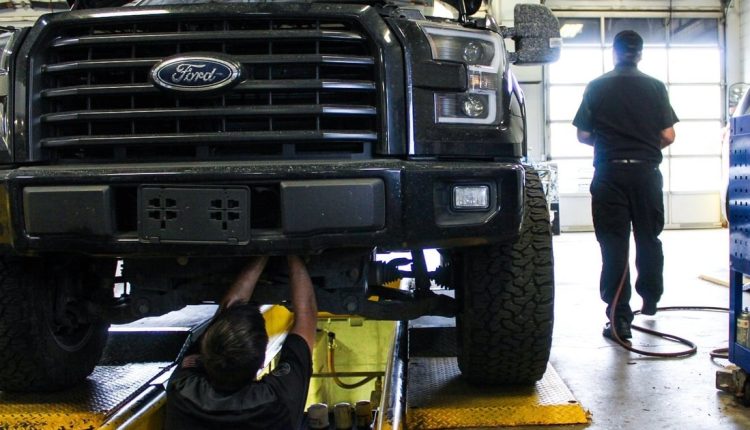Dealers agree that patience and communication are key to getting through a tough season with an unknown expiration date, especially when it comes to repairs.
“One of the things we can’t control are back-order parts — when they’re going to be in and whether there are workarounds so that people can get on the road safely in this interim period, before they can get their car back,” Glassman said. “… We’ve been fortunate we’ve got a pretty large loaner car fleet. But we’re trying to be intelligent about the distribution of those cars.”
Glassman said the uncertainty has put a strain on his employees.
“People have purchased their car with an expectation that if they have a problem, they’ll bring it in, and in the normal course of business, history will tell them that over a reasonable period of time, the cars will get fixed. … So when we run into some of these supply chain issues, naturally, if we’re unable to get people into a car, that’s when the anxiety can heighten,” he said.
Muncey said the best thing LaFontaine did to keep its customers happy was increasing its loaner fleet last year.
Before the pandemic, he said most dealerships only carried brand-new loaners, which they would allow to be driven about 3,000 to 5,000 miles before moving them into their new vehicle inventory to be sold. But given the historic inventory shortage, that wasn’t an option.
“We didn’t have new cars available to put into a loaner fleet,” he said. “We went out and bought hundreds of additional pre-owned vehicles to serve our guests’ needs in that regard.”
Fox Motors did the same thing.
“We’ve adapted quite a bit at multiple stores, using pre-owned vehicles when needed and putting those in our service loaner fleets,” he said.
Daniel, at Maple Hill in Kalamazoo, said it’s generally been a terrible time for the sales side of the dealership business, but identified one silver lining of the inventory shortage: With the average age of vehicles on the road rising to about 12.2 years, more people need parts and service, boosting business in the garage.
“Our parts business grew substantially this year, (and) our service business grew substantially this year,” he said, although he didn’t share specific numbers.
Wright, at Shaheen Chevrolet in Lansing, echoed that experience, but said the spike in business also means a shortage of technicians to work on vehicles.
“There’s more demand, and there’s not enough people to fix the cars,” he said.
What this perfect storm means for customers, Wright said, is being forced to adapt to life without a car by carpooling, taking the bus, or using another means of transit. For the most part, Shaheen Chevrolet’s customers — many of whom are either GM employees or related to one — have been an understanding bunch.
“People seemingly are figuring it out,” Wright said. “It’s just kind of like going back in time, before there were loaner cars and before everybody had the multiple vehicles and whatnot. You kind of had to figure it out.”
Moore, at Fox Motors, said he doesn’t have a crystal ball, but feels “some positivity” heading into this year that the component shortages will ease up.
“We are way better than we were six months ago,” he said. “…We feel that 2023 will potentially have a better inventory supply.”
Muncey, at LaFontaine, agreed.
“We still are seeing delays,” he said. “But I would say, overall, we’re in a much, much better position today than we were six months ago in terms of overall inventory, as well as moving customers that have been waiting for their chip.”


